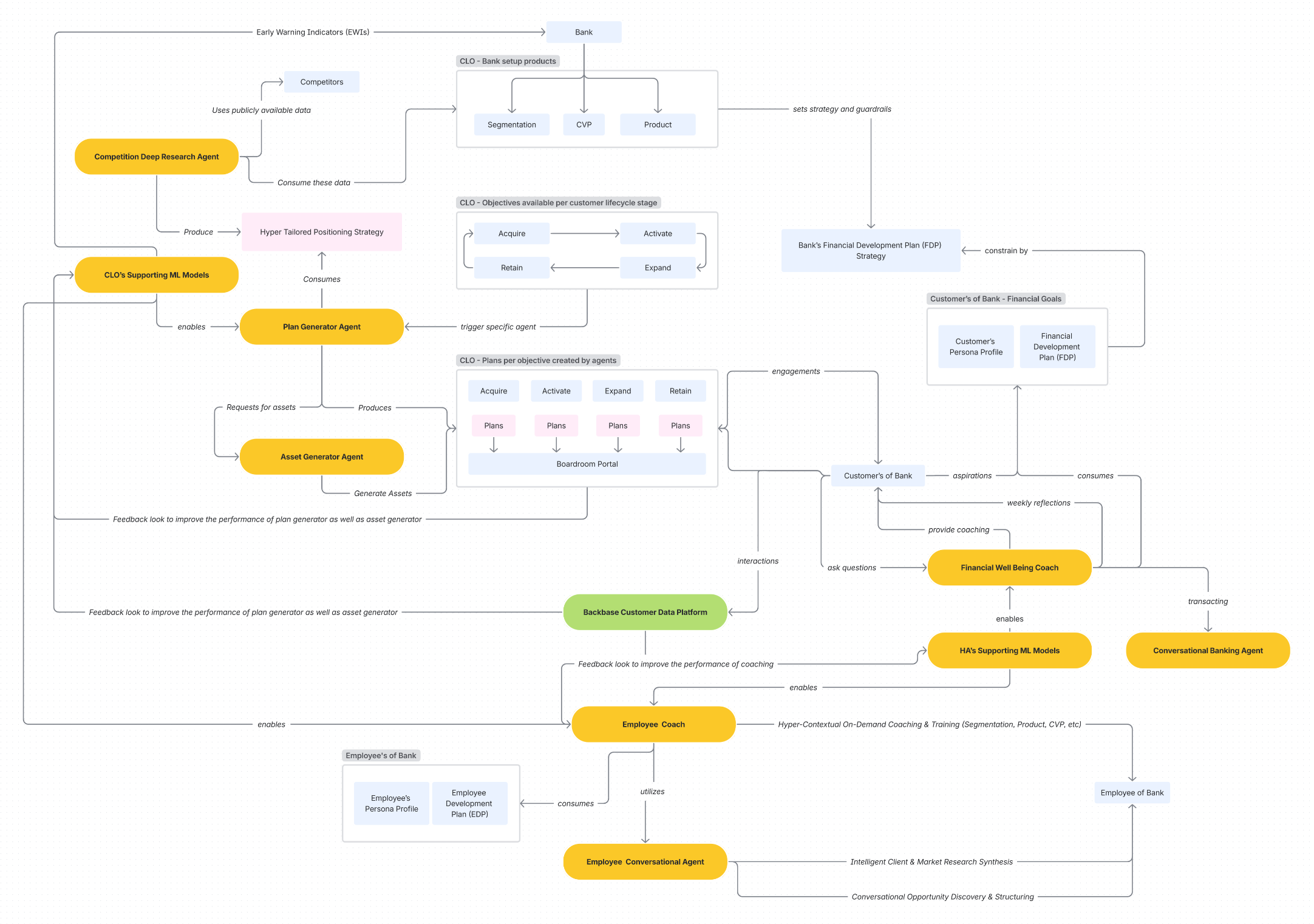
The current state of our pursuit of AI is, ironically, anchored to a fundamentally fragile and unsustainable architectural pattern: the monolithic, cloud-bound LLM. We are in a “mainframe” paradigm. These models, while providing a necessary, catalytic surge in capabilities, represent a technological adolescence. They are, in essence, brittle, power-hungry, economically non-linear, and beholden to a “brittle giant” architecture that treats intelligence as a stateless, high-latency utility.
As a strategist and systems architect operating within the framework of Meta Cybernetics — the science of designing, governing, and optimizing complex, adaptive intelligent systems — I see a clear and immediate need to shift the locus of intelligence. The next seminal epoch of AI will not be defined by mere scale, but by sovereignty, efficiency, and continuous adaptation.
This piece introduces and rigorously defines the successor paradigm: On-Device “Live-Self-Adapting” (LSA) Small Language Models. LSA models are not merely a shrunken version of their cloud predecessors; they are a radical re-architecture designed for persistent, embodied, and co-evolutionary intelligence at the edge.
The Unsustainable Cloud Monolith
Before we can build the new system, we must be ruthlessly honest about the limitations of the current one. The prevailing LLM architecture suffers from critical, interconnected failures, each a direct violation of fundamental cybernetic principles.
- The Latency-Taxed Control Loop (The Fragility of Centralization) In a Meta Cybernetic system, the efficacy of the control loop — the process of sensing, deciding, and acting — is paramount. Current LLMs enforce a high-latency, externalized control loop. Every cognitive step requires a round trip to the cloud. Failure of Embodiment. True ambient assistance must operate at the speed of thought, not the speed of your ISP. The 400ms-1200ms round-trip latency to a cloud server is an unbridgeable chasm. An intelligent agent embedded within a device (a robot, a vehicle, a personal assistant) needs sub-100ms decisiveness. The cloud’s latency ceiling and the unpredictability of the network fabric render truly real-time, mission-critical interaction impossible. The LLM is a distant oracle, not a proximate brain.
2. The Economic Inflexibility (The $10⁶$ Parameter Tax). The COGS for inference on massive models is astronomical. The cost-per-inference follows a cruel, non-linear function, necessitating colossal compute clusters. Failure of Efficiency. This architecture forces the end-user (or the application provider) to pay a constant, unavoidable compute tax for every single token, regardless of the complexity of the task. A simple text summarization is processed by the same over-provisioned behemoth used for high-level reasoning. This is a profound architectural waste — a violation of the principle of minimal necessary resource allocation. We are in a race to the bottom, burning capital to subsidize every API call, centralizing power in a new “mainframe” model.
3. The Brittle Training Paradigm & ‘Stateless’ Fallacy Current LLMs are historically static entities. They are trained on a vast, fixed corpus up to a specific cutoff date. To update their worldview requires a resource-prohibitive, multi-million-dollar Retraining Event.
- The Privacy & Personalization Paradox: This leads to an unsolvable paradox. You cannot have true personalization without true privacy. The current model demands you “pay” for personalization by surrendering your most private data to a third-party’s multi-tenant infrastructure for re-training. This is a Faustian bargain, and it’s unnecessary.
- Failure of Adaptation. This “snapshot intelligence” is fundamentally anti-cybernetic. A truly adaptive system must continuously adjust its internal model based on immediate, unique environmental feedback. This static nature creates the “stateless” fallacy. The greatest lie of the current paradigm is “chat history.” This is not memory; it’s a transcript. True memory is contextualized, associative, and integrated. A cloud-LLM doesn’t “remember” your last conversation; it simply re-reads the log file. It has no lived context.
Beyond Static Edge AI
My work on Meta Cybernetics is based on the principle that intelligent systems are not static “products” but co-evolutionary processes. A system is only as intelligent as its ability to adapt its own adaptive processes in a continuous feedback loop with its environment.
The current push for “on-device AI” or “edge AI” completely misses this point. Most “edge models” are just static, “distilled” versions of their cloud-bound parents. They are “inference-at-the-edge.” They run locally, which solves latency and privacy, but they are still brittle. They cannot learn. They are “born” with a fixed set of knowledge and will be “dumb” about your new project or colleague until a new, centrally-trained version is pushed to your device.
This is not a cognitive system. It’s a read-only database.
The Meta-Cybernetic imperative demands a system that learns where it lives. This leads us to the new architectural primitive: the LSA-SLM.
On-Device “Live-Self-Adapting” (LSA) Small Language Models
The future lies in the LSA-SLM. This is not a product roadmap; it is an architectural specification for a new class of intelligence, defined by three mandates.
“Small” — The Architectural Mandate for Sovereignty The term ‘Small’ is not an admission of reduced capability but a mandate for efficiency and sovereign deployment. We must be precise about the capability trade-off. An 8B LSA model will not outperform a 1.5T-parameter cloud giant in a zero-shot general knowledge trivia contest. It will not write a Shakespearean sonnet about 18th-century French poetry (unless you happen to be an expert in it).
This is not the goal. The LSA-SLM trades encyclopedic breadth for contextual depth.
Its ‘intelligence’ is not defined by its ability to recall the entire public internet, but by its perfect, predictive fidelity to your personal cognitive domain. The cloud model knows everything; your LSA model knows you.
This hyper-personalization is the compensating feature. An 8B model that already knows your project codes, your colleagues’ names, and your preferred communication style by default is operationally more valuable for 90% of your daily tasks than a 1.5T amnesiac model that you must spoon-feed with a 128k context window every single time.”
- Parameter Constraint: LSA models target the 2 Billion to 15 Billion parameter range. This range is not arbitrary; it represents the current sweet spot for achieving near-human-level fluency and reasoning while fitting within the thermal and power envelope of commodity consumer silicon (e.g., dedicated NPUs, modern CPU/GPU caches).
- Efficiency: LSA relies on hyper-efficient quantization (e.g., 4-bit, 3-bit, or even adaptive mixed-precision) and hardware-aware sparsity. The goal is to maximize the Tokens/Watt ratio. Its “intelligence” comes not from its initial parameter count, but from its hyper-personalization.
“On-Device” — The Architectural Mandate for Proximity This is the shift from a centralized “brain” to distributed, embodied “minds.”
- Zero-Latency Control: By executing on the device, the LLM-powered control loop is brought down to a negligible latency, enabling genuine real-time cognitive processing and fluid human-computer interaction.
- Data Sovereignty & Privacy: On-Device computation is the only true architectural guarantee of user privacy. Personal, proprietary, and highly sensitive data never leaves the local perimeter, eliminating the major attack surface and regulatory overhead. Privacy becomes an architectural feature, not a policy-based hope.
“Live-Self-Adapting” (LSA) — The Cybernetic Imperative This is the defining, non-negotiable feature. LSA models are systems designed for continuous, lightweight, and low-power adaptation in situ. This is what makes it a “learn-it-all” Cognitive Twin, not a “know-it-all” oracle.
- The Adaptation Layer: LSA models feature a distinct, dynamically-loaded adaptation layer. This layer is capable of modifying a small subset of the model’s weights based on new, local, personalized data, using techniques like LoRA or emerging state-space model methods.
- Continuous Local Learning: The model does not wait for a Retraining Event. It learns from every novel user interaction, every new piece of local data, and every error it makes (e.g., you backspace over its suggestion). It must be energy-proportional — consuming negligible power during idle and only spiking moderately for adaptation.
- The ‘Meta-Model’ for Adaptation: An advanced LSA model will incorporate a Meta-Model — a small, dedicated network that learns how to adapt the main model efficiently, directing the low-rank updates to the most impactful weights and optimizing the learning rate in real-time.
The New OS Stack
This is not a “new app.” This is a new, foundational layer of the operating system. We need to architect a “Cognitive Subsystem” or a “Cybernetic Kernel” directly into the OS, parallel to the file system, network stack, and scheduler. This is the blueprint.
The Silicon Mandate: NPUs for Adaptation, Not Just Inference The new generation of Neural Processing Units (NPUs) and “AI PCs” are being marketed for faster inference. This is a failure of imagination. Their true purpose is low-power, continuous adaptation.
- Hardware Design: NPUs must integrate specialized circuitry for efficient matrix multiplication and for on-chip, high-speed weight updates and caching for these adaptation layers.
- Heterogeneous Compute Fabric: LSA models will execute across a CPU-GPU-NPU heterogeneous fabric. The system must intelligently partition inference tasks (on the NPU) and adaptation tasks (fine-tuning on low-power CPU/GPU cores) to maximize the TFLOPs/Watt of the entire system.
The OS-Level “Cybernetic Kernel” (LSA Runtime) This is the new “daemon” or “scheduler” at the heart of the OS, managing the LSA-SLM’s lifecycle. It has two core responsibilities:
- Adaptation Scheduling: This kernel process monitors device state (e.g., plugged in, idle) to schedule the self-adaptation cycle. When you’re idle, the kernel “replays” recent events from the Data Vault, performing a LoRA update on the LSA-SLM’s adapter layers. The model’s weights are your personal data and must be stored in the secure enclave. Finally, we must be realistic about the thermodynamics of this system. ‘Live-Self-Adapting’ must not be misinterpreted as ‘constant, power-hungry training.’ That would destroy battery life and is architecturally unnecessary. The LSA model operates on a principle of ‘opportunistic adaptation.’ Capture is Live; Training is Gated: The capture of feedback (your backspaces, your corrections) is ‘live’ but computationally trivial — just logging an event to the vault. The Adaptation Cycle is Gated: The actual training — the back-propagation and weight updates on the LoRA layers — is a high-intensity but short-lived process managed by the Cybernetic Kernel. This process is scheduled only when the device meets specific criteria: idle, charging, and thermally stable. This is not continuous training; it is persistent training. The model ‘sleeps’ and ‘learns’ when you do, integrating the day’s events overnight. You wake up to a slightly smarter, more adapted partner, with zero impact on your active battery life.
- Secure Data Governance (The “Personal Data Vault”): The Kernel acts as the gatekeeper for a user-controlled, on-device “data vault.” This is an event stream of your personal context (e.g., app-in-focus, text from a secure buffer, implicit corrections). The LSA-SLM can read from this stream to train, but no other process (and especially no network call) can access it without explicit, granular user permission.
Confronting the ‘Honeypot’ Risk: Anchoring the Vault in Hardware
We must confront the security implications directly. A ‘Personal Data Vault’ is not just a privacy win; it is also a high-value security target — a ‘honeypot’ of your most sensitive information. Simply ‘storing it on-device’ is an insufficient, 2010-era security posture.
The vault’s security must be anchored in hardware, not just software.
- Secure Enclave Isolation: The Data Vault and the LSA ‘Adapter Bank’ (which is your data, in weighted form) must reside within the Secure Enclave or an equivalent hardware-level TEE (Trusted Execution Environment). They must be cryptographically isolated from the main OS.
- Process-Level Attestation: The only process permitted to read from the vault is the OS-level ‘Cybernetic Kernel,’ and this process itself must be attested (its cryptographic signature verified) at boot.
- No Egress by Default: The vault is a black box with no network egress capabilities. Period. Any attempt by any process (even a compromised browser) to read the vault and open a network socket must be terminated by the kernel. The only data that leaves is the anonymized, orchestrated query to the cloud, as described in the hybrid model, which is explicitly managed by the attested kernel.
The “Live” Model & Data Architecture The LSA-SLM cannot be a monolith; it must be architected for adaptation from its inception.
- The “Adapter Bank”: The OS manages a bank of private, on-device LoRA/adapter layers. These layers are your personalization. When you use the model, the OS “fuses” a static, general-knowledge base model with your current, hyper-personalized adapter layers.
- “Zero-Shot Adaptability” Pre-Train: The base models themselves must be pre-trained not just on a large corpus, but explicitly trained to be maximally susceptible to rapid, low-rank adaptation. This involves novel training objectives that encourage the model’s knowledge to be organized in a way that is easily editable via small updates.
The Orchestration Challenge
This on-device LSA-SLM does not replace the cloud; it orchestrates it. The LSA-SLM becomes the “Personal Cognitive Router” — the “front-end” for all your AI interactions, handling the 90% of tasks that are personal and dispatching the 10% that are general.
This creates a new, hybrid, and economically viable architecture:
Scenario 1: Personal Query (100% On-Device)
- User: “What was that company my colleague Sarah mentioned yesterday in our chat about Project Apollo?”
- LSA-SLM (Cognitive Router): Accesses its secure, local-only-indexed context from the “Personal Data Vault.” It “knows” who “Sarah” is and what “Project Apollo” is.
- Action: Provides the answer instantly. Zero latency. Zero cloud cost. Zero privacy leak.
Let us be rigorous: the specter haunting any continuous learning system is catastrophic forgetting. A naïve implementation that fine-tunes the entire model on new, personal data (“Project Apollo is the new codename”) would catastrophically degrade its foundational knowledge, causing it to “forget” how to reason.
The LSA architecture is not a monolithic re-training. That would be destructive. The solution is an architectural firewall between base knowledge and live adaptation.
- The Frozen Foundation: The 8B-15B parameter base model is treated as a frozen, general-knowledge foundation. Its weights are, for the most part, immutable. This foundation provides the core reasoning, language, and world knowledge.
- The Live ‘Adapter Bank’: Adaptation occurs exclusively within the ‘Personal Adapter Bank’ — a set of highly-efficient, LoRA or similar PEFT layers. These adapters are the only weights that are modified.
- Isolated Knowledge: When the LSA-SLM learns “Project Apollo,” it is not re-wiring its core understanding of physics; it is writing to a new, federated ‘page’ in its adapter bank. The Cybernetic Kernel then fuses this personal adapter with the frozen base model at runtime. This isolates new, personal knowledge from the foundational model, neutralizing the risk of catastrophic forgetting.”
Scenario 2: General Knowledge Query (Orchestrated Cloud Call)
- User: “Give me the latest market analysis on that company.”
- LSA-SLM (Cognitive Router): Recognizes this is a general, “fresh” knowledge query. It augments the prompt with its private context.
- Action: It makes a federated, anonymized call to a powerful cloud-LLM (e.g., a 1.5T+ model), passing a query like:
{"query": "latest market analysis", "company_name": "XYZ Corp"}. - Result: It gets the raw data back from the cloud, then re-renders it for you, formatted in the way it knows you prefer.
In this model, the cloud returns to its proper role: a powerful, expensive utility for heavy-duty, non-personal computation. Your device becomes the center of your cognitive world.
Architecting Sovereignty
The shift from Cloud-Bound LLMs to On-Device LSA Small Language Models is not an incremental optimization; it is a foundational architectural inflection point. It is the moment we move from renting intelligence (the cloud model) to owning sovereign, adaptive intelligence (the edge model).
The current path — building ever-larger data centers to house amnesiac oracles — is a path to centralized, high-latency, and impersonal computation. It is the “mainframe” model, and it will be disrupted by the “personal computer” model.
The LSA paradigm, grounded in the principles of Meta Cybernetics, promises to deliver the necessary requirements for truly ubiquitous, persistent, and personalized intelligence. This is the move from a “command-and-response” tool to a co-evolutionary partner.
For technical leaders and systems architects, the mandate is clear: Stop optimizing for the monolith. Start architecting for the mosaic. The future of AI is not larger; it is proximate, adaptive, and live.
The work begins now.



